Let ourselves be in the moment
Interview with jazz pianist and composer Tord Gustavsen
after a concert at Paliesius Manor

Tord Gustavsen © Simas Martinonis
The Concert Hall of Paliesius Manor "Pasagos", known not only in Lithuania, but also abroad, has a special history and unique acoustics. World-famous performers are constantly coming to the touches filled with tranquility to perform and make music recordings. On May 6, 2023 this unique space was full of melomans gathered to hear the Trio of Norwegian jazz pianist Tord Gustavsen, who had repeatedly performed here. The concert featured their latest album, “Opening” (2022), produced by ECM.
The music did not take its breath away, as “Pitchwork” magazine wrote, on the contrary, the meditative mood created by the musicians calmed and synchronized the breath. The texture of live music was complemented by electronic elements (sound designer Anders Oliver), and this provided a slightly different musical experience than listening to the album's recordings. This music was created during the pandemic, it has a good sense of a balanced ratio of sound and silence, leaving room for personal reflection as well. Scandinavian minimalism, intertwined with echoes of folklore, calms, but does not necessarily sound melancholic. We also heard major compositions. It was a masterful, technically flawless performance by a well-played trio that you don't even think about how it's done when you listen to it. You just let yourself be immersed in music.
After the concert in Paliesius Manor we talked with Tord Gustavsen about this unique scene, the artist's work and the new album.

Tord Gustavsen © Simas Martinonis
You have performed in different parts of the world and places. How does different cultural contexts affect music and its performance? You have performed in Lithuania more than once. What are the impressions after the concert in Paliesius Manor ?
When space is special and inspiring, such as Paliesius Manor, it shapes both - the music and its performance, because both the physical properties of acoustics and the visual image of space interact, which is also historical. I feel the energy of that space, what happens in it, how it changes with time. Unique sound, unique configuration, geometry and acoustics. Old ruins, framed in a modern way with glass, awaken the imagination, both historical and spiritual. That's what happens in every space, but when it's as specific as in Paliesus Manor, all that interaction becomes so much more intense.
We often perform in churches, from huge cathedrals to small, wooden churches in Norway. For me, this is the most special experience because of their historical and spiritual significance. And also because of the people who bring their longings, celebrations and sorrows when they come there. It's been that way forever and you might feel it's a sacred place. It always inspires me.
Of course, I might like modern spaces where music speaks as if in an isolated, clean environment. You may like a cozy place where listeners sit very close, or huge halls when the stage is above the listeners. Perhaps the most important condition of the concert for me is the space in which spiritual intimacy between the performers and the listeners is revealed. Paliesius Manor is exactly the place where this happens.
What role does spontaneity play in your live performances ?
We usually don’t have a fixed set list. So we may have talk about it today, I really want to play this or this during the concert, but then we just start and see what happens. And then of course the selection of compositions and the way is played is also influenced by acoustic in a room. The tempos, and feelings and also keys depends on it. Sometimes we transpose pieces into new keys that feel more right for the room or a particular piano to flow. So definitely, musical choices are heavily influenced by the places.
Then each concert is a unique experience and turns out in a different way. Second time the audience will not hear the same ?
Of course, spontaneity gives the music novelty, freshness. Since the release of the new album “Opening” in 2022, we have given more than a hundred concerts. And every time we play it is different, new – otherwise it would become a routine.

Jarle Vespestad © Simas Martinonis
“Opening” is like a new-sounding sequel to the albums released before that. In the sonic palette, motifs of Scandinavian folklore, hymns are heard, the influence of Bach's music is felt. What were the creative decisions of the new album, the choices of the arrangements, and the recording process itself ?
This album is like a fine balance between freshness and continuity. I never try to make something new just for the sake of making something new. That I find very boring. It is much more interesting to depend and move creative spirals. And then one thing that keeps music evolving of course is experiencing new things in life. And how we play always be partly consequence of what been listening to, what happens in our life - sorrows, tragedies, good things, spiritual encounters. All this also affects the performance of music.
And in my case it has become that the drummer Jarle Vespestad is the same on all albums but the different eras of my career has the different bass players. The sound palette of Steinar Raknes, who played “Opening” recordings, is different from Sigurd Hole, a double bass player who played with the trio before, which, by the way, also has a very unique sound.
In a sense we are still very contemplative music project but it’s also a bit more rock and roll in a certain way. For example, Steinar uses carefully chosen effects on his base and combines with me using some electronic, very settle soundscape and samples that are triggered from the piano. That also shapes the sound, even more during a live concert than in the recordings of the album.
Lastly the album “Opening” was also recorded in different studio than we have done albums before – “Auditor Stelio Molo RSI” in Lugano, Switzerland. And recorded in a room almost without separation between instruments, so we really listen even more in a chamber music way, without headphones. Listening back, I hear that it shapes slightly in a different way and it makes piano sound even better than before. We have always done albums very live like playing - together in the same studio, at the same time, but the drums were normally in a separate booths with a glass doors and so the bass behind like a wall that gives some good sound mixings options. But then, being very close each other’s, without this separation - brings another kind of presence and very natural chamber music feel to the sound.

Steinar Raknes © Simas Martinonis
Which composition from “Opening” is closest to you, and has a special meaning ?
A very difficult but good question. If I had to choose one composition, it would be “Flute”. The main theme of the composition is very lyrical and laconic, like a mantra. It's a melody that I borrowed and whose words people of my generation know by heart. This is a very beautiful, metaphorical poem. The main idea of which encourages us, people, to be open to ourselves. To allow yourself to be like a flute played by higher powers, whether it's God or the power of infinite love — anything that's above ourself. There is nothing to do with it and allow a stream of air to flow freely through itself, as if through a flute. For me, this is a very significant and important composition. Of course, I don't use words when performing it, but on the piano I try to play the main theme as if I were singing.
You've created a distinctive musical style. Can you share your thoughts on artists, musicians, or other sources of inspiration that have influenced shaping your approach to music and contributed to your unique sound ?
The first and probably the main inspiration was my father. He was a non-professional musician, but he constantly played the piano at home. I also started playing the piano at the age of three to four. These were improvisations, which gradually grew into melodies, as well as hymns, lullabies. We often played together with four hands. It has had a decisive impact on me. It is very important to mention that the musical acquaintance began in the form of a game, when it was not scary to play irregular notes. It helped me create a space where I can express myself by playing and grasping the deeper meaning of playing. It was also important for me to play in churches, to accompanies choristers, to the singers of the controversy. I really appreciate accompaniment to voices, even more so than playing solo. At the same time, it's also my passion for the melody that allows the piano to sing.
Stylistically, I'm inspired by a variety of things — traditional church music, hymns, African and American gospel, which I played when I was a teenager. It's also classical music that I listen to and play a lot. I was especially inspired by such composers as Bach, Ravel, Shostakovich. As well as the history of jazz, which I studied at the conservatory. Finally, Norwegian folk music, which I discovered much later, but it is still an important basis for my work. By the way, not only Norwegian folklore, but also Persian music, their performers, singers from Turkey, Iran.

Tord Gustavsen © Simas Martinonis
You mentioned how important it is not to feel fear that you will make mistakes, to be spontaneous and open in music. Are you engaged in pedagogical activities yourself? What advice could you share with jazz performers immersed in creative searches ?
The best advice I can give is to listen. Listen to music of other artists, different styles. Listen to how the sounds merge, interact with each other and how the whole sounds. When listening, it is important to forget that you are practicing, that you have to play, that you must show something. Many good musicians have a conservatory education, which provides a huge base of playing techniques, and often it seems to musicians that they have to demonstrate all this by playing. But my main idea is to forget all this and use the technique only as a tool that helps to express the inner voice, emotions and presence in this moment. Of course, it is necessary to practice, but let's allow ourselves to be in the here and now. This is the most important thing.
Your music is described as meditative, emotionally intense, breathable. How would you hear and describe your music yourself ?
Descriptions are important, but it is much more important to listen to music with an open mind and an open soul, because descriptions will never be the real reality. I would describe my own music as lyrical, chamber jazz.
You have studied the history of jazz and your work is affected by this. Jazz music often responds to the current affairs of that era – politics, human rights, etc. Is this relevant to your work, or do you distance yourself from it ?
In fact, yes, relevant. Music has the power to help you get out of pain, as well as the power to change and inspire us. It can also promote political activism. The power of music can turn enemies into friends. When we're performing, our job is to just play as best we can and be open. But from a different perspective, a significant part of that playing is the challenges we face, such as a global tragedy like war. When we come to Lithuania to perform, geographically we are closer to Ukraine, Russia, Belarus, and this is already a different feeling than when we are in Norway. In our country, there are also quite a few refugees from Ukraine, and at the beginning of my concerts I usually perform the Ukrainian Kyrie Eleison, because this tragedy that Ukraine and its people are experiencing is also our tragedy. Music helps to feel better, helps people to be more conscious, and reminds us that the world desperately needs political leaders to solve these problems, that the world needs people to come together and build bridges together.

Tord Gustavsen © Simas Martinonis
Thank you for the interview.
Text © Ieva Pakalniškytė - photos © Simas Martinonis
Originally published on 7md.lt

Other
In case you LIKE us, please click here:
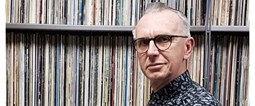
Foto © Leentje Arnouts
"WAGON JAZZ"
cycle d’interviews réalisées
par Georges Tonla Briquet

our partners:



Hotel-Brasserie
Markt 2 - 8820 TORHOUT
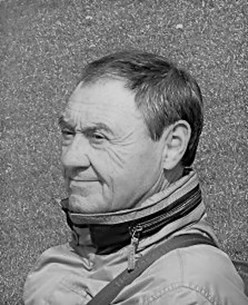
Silvère Mansis
(10.9.1944 - 22.4.2018)
foto © Dirck Brysse
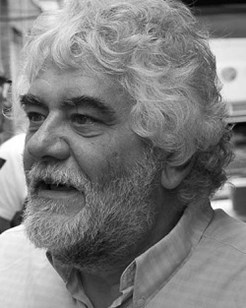
Rik Bevernage
(19.4.1954 - 6.3.2018)
foto © Stefe Jiroflée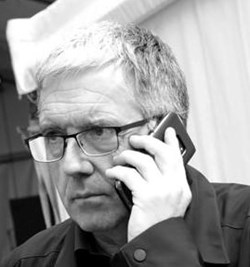
Philippe Schoonbrood
(24.5.1957-30.5.2020)
foto © Dominique Houcmant
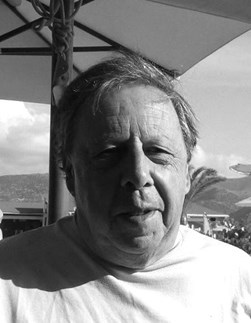
Claude Loxhay
(18/02/1947 – 02/11/2023)
foto © Marie Gilon
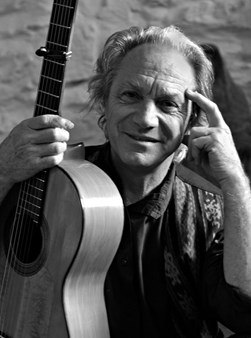
Pedro Soler
(08/06/1938 – 03/08/2024)
foto © Jacky Lepage
Special thanks to our photographers:
Petra Beckers
Ron Beenen
Annie Boedt
Klaas Boelen
Henning Bolte
Serge Braem
Cedric Craps
Luca A. d'Agostino
Christian Deblanc
Philippe De Cleen
Paul De Cloedt
Cindy De Kuyper
Koen Deleu
Ferdinand Dupuis-Panther
Anne Fishburn
Federico Garcia
Jeroen Goddemaer
Robert Hansenne
Serge Heimlich
Dominique Houcmant
Stefe Jiroflée
Herman Klaassen
Philippe Klein
Jos L. Knaepen
Tom Leentjes
Hugo Lefèvre
Jacky Lepage
Olivier Lestoquoit
Eric Malfait
Simas Martinonis
Nina Contini Melis
Anne Panther
France Paquay
Francesca Patella
Quentin Perot
Jean-Jacques Pussiau
Arnold Reyngoudt
Jean Schoubs
Willy Schuyten
Frank Tafuri
Jean-Pierre Tillaert
Tom Vanbesien
Jef Vandebroek
Geert Vandepoele
Guy Van de Poel
Cees van de Ven
Donata van de Ven
Harry van Kesteren
Geert Vanoverschelde
Roger Vantilt
Patrick Van Vlerken
Marie-Anne Ver Eecke
Karine Vergauwen
Frank Verlinden
Jan Vernieuwe
Anders Vranken
Didier Wagner
and to our writers:
Mischa Andriessen
Robin Arends
Marleen Arnouts
Werner Barth
José Bedeur
Henning Bolte
Erik Carrette
Danny De Bock
Denis Desassis
Pierre Dulieu
Ferdinand Dupuis-Panther
Federico Garcia
Paul Godderis
Stephen Godsall
Jean-Pierre Goffin
Claudy Jalet
Chris Joris
Bernard Lefèvre
Mathilde Löffler
Claude Loxhay
Ieva Pakalniškytė
Anne Panther
Etienne Payen
Quentin Perot
Jacques Prouvost
Renato Sclaunich
Yves « JB » Tassin
Herman te Loo
Eric Therer
Georges Tonla Briquet
Henri Vandenberghe
Peter Van De Vijvere
Iwein Van Malderen
Jan Van Stichel
Olivier Verhelst



